Laser Hair Removal
Hair Free, Hassle Free.
Get silky smooth skin with our advanced quadruple wavelength laser hair removal technology.
Hair Transplant
Get your ‘crown’ back with patented
Hair Transplant technique at DNA.
Hydrafacial
Nothing compares to an original Hydrafacial.
Fresh Skin in 30 minutes.
Liquid face lift
Aging is mandatory, but looking your age isn’t.
Reverse the clock with Liquid face lift at DNA.
A technique that combines various treatments in one session for faster control of Hair Fall and to boost hair growth in effective ways.
Read MoreDone using anti wrinkle injection, fillers , thread lifts that helps in facial contouring for younger people and as an anti-aging for older individuals.
Read MoreRejuvenate and Refresh with our customised antioxidant and skin brightening ingridients that fights the free radical damage.
Read MoreGet rid of all the type of scars including acne scars with combination treatment.
Read MoreHelps in achieving radiant glowing skin , reducing fine lines and wrinkles.
This procedure involves injecting patient’s own platelets and other growth factors in to their facial skin.
Read MoreAt DNA wide range of chemical peels are available that helps in addressing almost any skin concern.
Some of our popular peels are party peel, De Tan peel, pumpkin peel, black peel.
Read MoreA hair transplant is a procedure in which the doctor moves the hair from the back or the side of the head to the front or top of the head where there is thin or no hair. Hair transplants are generally performed under local anesthetic and are a daycare procedure.
A hair transplant is a procedure in which the doctor moves the hair from the back or the side of the head to the front or top of the head where there is thin or no hair. Hair transplants are generally performed under local anesthetic and are a daycare procedure.
Read moreSafety
and comfort
Transparency
and accountability
Natural
looking results
Hair
for lifetime
I BIO FUE 
Executive Partner of I Bio Fue® patented technology.
Very Less trauma
Fast Healing
Seamless Donor Area
Range of skin treatments include pigmentation, acne treatment, melasma, skin tags removal, freckles etc.
Read MoreOffering a range of hair treatments such as hair transplant, mesotherapy, dermaroller, dandruff etc.
Read MoreGet a beautiful and toned body. You can achieve this with treatments such as non-surgical body contouring, coolsculpting, muscle toning, fat loss injections etc.
Read MoreOffering a range of aesthetic treatments such as dermal fillers, laser toning, lip fillers, carbon peel, microblading, thread lift etc. to help skin fight the signs of aging.
Read MoreOffering a range of cosmetic surgeries such as tummy tuck, butt lift, liposuction, birthmark treatment, vitiligo surgery etc.
Read MoreWe understand the need of having a healthy lifestyle and suggest healthy habits that help you stay fit.
Read MoreDNA (Dermatology and Aesthetics) Skin Clinic is for patients / clients who are looking for a one-stop solution to all their skin and body related issues. We believe in a holistic approach to any condition. We are a team comprising of a dermatologist, a plastic surgeon, a nutritionist, a physical therapist and very friendly and experienced staff who are all committed to giving a multimodality approach to your conditions... Read More
Read MoreHolistic Approach
US-FDA Approved
Equipments
Patient Safety
Unmatched Results
Concern: Pigmentation (Melasma)
Treatment: DNA Lighten up
No. of sessions: 1
Results seen within a month of the treatment , also required consistent use of a personalised skin care routine to be used for 3-4 months.
Book an AppointmentConcern: Active acne
Treatment: DNA BB
No. of sessions: 1
Results seen: 2 months with DNA BB and consistent use of a personalized skin care protocol.
Book an AppointmentConcern: Acne Scars
Procedures done: Combination of Fractional CO2 Laser with Radiofrequency microneedling and subscision RF
No. of sessions: 5 sessions, 1 month gap between each session
Results seen: in 6 months
Book an AppointmentConcern: MALE PATTERN BALDNESS/ HAIR LOSS
Treatment: Hair transplantation
No. of sessions: 1
Results seen: 8 months post procedure.
Book an AppointmentConcern: Upper Lip definition and volume / Eye bags with under eye hollows
Procedure: Fillers
No. of sessions: 1
Results seen immediately after the procedure.
Book an AppointmentConcern: Frown lines , Crow’s feet
Treatment: Botulinum Toxin Injections
Results seen: Within 5-7 days post procedure.
Book an AppointmentProcedure: Laser Hair reduction
No. of sessions: 6, gap between each session will be 1-2 months
Results seen in 8 months.
Book an AppointmentMBBS, MD - Dermatology , Venereology & Leprosy
Dermatologist, Cosmetologist
Dr. Priyanka Reddy (M.B.B.S, M.D;D.V.L, Fellowship in Cosmetology from the USA) is a renowned Dermatologist, Cosmetologist, and Trichologist in Bangalore. She is the founder of DNA Skin Clinic and Wellness Center After completing her M.D., she extended her training in cosmetology under many highly experienced doctors in the United States, in treatments related to injectables (anti wrinkle injection, fillers) and anti-aging.
Great facility. Very friendly and knowledgeable staff. Diagnosis was thorough with understandable information about findings and path forward.Dr. Priyanka performed the procedures in a professional manner. She explained the process step by step. Couldn’t ask for a better experience. The staff cares about you.
View AllGreat facility. Very friendly and knowledgeable staff. Diagnosis was thorough with understandable information about findings and path forward.Dr. Priyanka performed the procedures in a professional manner. She explained the process step by step. Couldn’t ask for a better experience. The staff cares about you.
PRODUCT
We all know pandas are adorable, but we don't want to look like a human version of them because of our dark circles. Read More
View AllPublished by 
Published by 
803, Promenade, 2nd Cross, 80 Feet Road, Opp. Banaswadi Sub Registrar Office, HRBR Layout 1st Block, Kalyan Nagar, Bengaluru, Karnataka 560043
Clinic Timing : Monday - Saturday : 10 AM – 7 PM | Sunday : Closed
Phone :
Email :
Clinic Timing :
Monday - Saturday : 10 AM – 7 PM | Sunday : Closed

